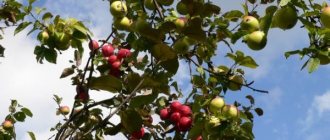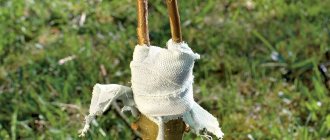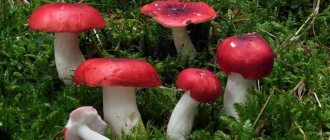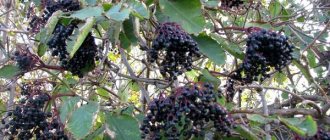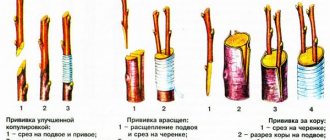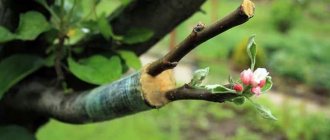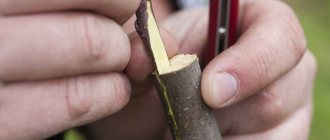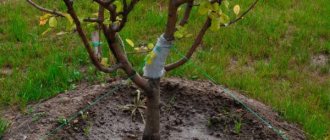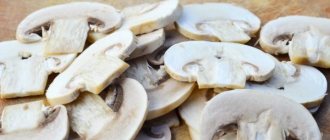LiveInternetLiveInternet
-Music
—Categories
- winter preparations (84)
- jacquard (34)
- patchwork (26)
- crochet magazines (19)
- audiobooks (9)
- beads (31)
- beading (41)
- embroidery (1767)
- embroidery magazines (136)
- embroidery amulets (28)
- knitting (2122)
- socks (49)
- patterns (46)
- knitting for children (267)
- knitting magazines (737)
- crochet (1308)
- knitting tablecloth (111)
- decoupage (10)
- design (94)
- house (112)
- blanks (15)
- health (138)
- toys (154)
- interesting (32)
- cinema (2)
- cosmetics-makeup (18)
- crochet slippers (75)
- crochet tops.sweatshirts (2)
- cooking (308)
- kitchen (17)
- personalities (8)
- patchwork (194)
- wise thoughts (7)
- music (21)
- music (4)
- cartoons (3)
- vegetable garden (221)
- postcards (12)
- alterations (19)
- useful tips (107)
- psychology-esoterics (86)
- religion (73)
- handicrafts (93)
- garden (96)
- tips (9)
- style (48)
- poems (118)
- circuits (11)
- movies (1)
- photo (6)
- sewing (273)
- bag sewing (24)
—Search by diary
—Subscription by e-mail
— Regular readers
—Communities
-Statistics
GRAFTS OF PEARS ON HAWTHORN AND BLACK ROWAN. FROM THE EXPERIENCE OF AN OLD GARDENER
Grafting a pear onto hawthorn and chokeberry. From the experience of an old gardener.
I lived in Siberia for more than 30 years, but only in adulthood did I take up gardening, and then I discovered that in our area, with rare exceptions, the range of fruit and berry crops is extremely poor - it is limited one or two “semi-cultivated” and 2-3 creeping apple trees, almost no one grows pears.
I spent my youth in southern Kazakhstan (Semirechye), where there were pears in almost every yard, and in the highlands, where the climate is not inferior in severity to ours, as schoolchildren we grew entire groves of apple and pear trees on the slopes.
So I decided to grow pears in my garden. I grow the rootstocks myself from what is on hand in our area. I would like to warn novice gardeners in advance: in my opinion, experiments with grafting pears onto shadberry or chokeberry are a waste of time, since almost every year it is necessary to regraft the pear onto new shoots - after 6, maximum 8 years, the old graft dries out. If this still does not stop you, then heed at least some practical advice: you cannot graft a pear onto a single annual branch or seedling of serviceberry or chokeberry.
If you are grafting a pear onto a three-year-old or older bush of serviceberry or chokeberry, then on 3-5 grafted branches you need to leave 2-3 root fruit-bearing branches and cut out the rest.
It’s another matter if a wild pear is chosen as the scion. Then you can graft onto a 2-year-old plant either by copulation or by eye, followed by pruning the central conductor of the rootstock.
On 2-3 year old plants of Canadian hawthorn or forest rowan, it is better to graft at a height of 50-80 cm, with the first grafting done on the central conductor, and then, the next year, on the skeletal branches of the first order, etc.
The best results were obtained by grafting with an insert of forest (or cultivated) rowan onto the “boyarka”. In this case, rowan, slightly limited in growth by the "boyarka", delays the flowering and fruiting of the pear for one year, but, as laboratory analysis has shown, the content of flavonoids and amino acids in the fruits increases. They become softer and tastier than the direct variety, the pears are larger and there are 15-20% more of them. I have made it a rule: not to graft more than one variety onto a rootstock.
The desire of many gardeners to make a garden on a plot of 3 acres out of one tree is natural, but if this can be permissible in areas with a mild climate, where such messages come from, then here, as my experience and the experience of friends have shown, this only results in the death of the entire tree . The rootstock adapts faster to one variety. Just remember: to successfully grow a pear, you must leave at least one of your own, preferably a fruit-bearing branch of the rootstock. I leave the competing branch, but by constricting and furrowing I inhibit its growth and this is quite enough.
Compatibility of fruit trees for grafting
As can be seen from the table, hawthorn is most often used for rootstock - it is the most versatile and its root system is well adapted to the environment.
Of the scions, the pear behaves most unpretentiously in relation to the rootstock - its cuttings can be grafted almost anywhere.
How to grow hawthorn from cuttings
The cutting method has its own characteristics, which must be observed in order for the hawthorn propagation process to be effective. First of all, it is important to choose the right shoots for cutting cuttings. Gardeners without experience often make a big mistake by choosing shoots that grow upward. Such cuttings will not be able to form a good root system. For propagation of hawthorn by cuttings, lateral branches that are not characterized by active growth are suitable.
It is also wrong to choose long shoots and cut them into several parts. In this case, only those cuttings that were located at the base will be able to take root.
Important! The apical part of the hawthorn shoot has a very low survival rate.
There are several recommendations for the correct selection of planting material intended for propagating hawthorn by cuttings:
- The shoots should not be frozen or have any other damage.
- It is better to take vegetative material for propagation from the middle of the bush, focusing on the southern part of the crown.
- The age of hawthorn shoots should not exceed 1 - 2 years.
- The optimal thickness of each cutting is 7 – 8 mm.
In the successful propagation of hawthorn by cuttings, correct cutting of plant segments plays an important role. The culture reproduces poorly with lignified shoots. To divide such hawthorn cuttings into parts, cuts should be made in the center of the internodes. Greenish unripe shoots are cut off under a bud or node, since the tissues in these places are most protected from the occurrence of fungal diseases.
On all cuttings, the top cuts must be made at an angle of 45 degrees, very close to the bud, without leaving stumps. To do this, use a sharp knife or pruning shears, previously disinfected.
Hawthorn propagation by cuttings is carried out in early spring, before the start of the sap flow period, and also in late autumn, after the end of leaf fall. Cuttings, cut into pieces 10–15 cm long, are kept for an hour in a solution that stimulates root growth, after which they are planted in a mixture prepared from equal parts of peat and sand. The top layer is moistened with a root-forming composition in which the cuttings were previously located.
To improve the rooting process, the cuttings are covered with glass jars, thus creating conditions similar to those in a greenhouse. After the first leaves appear, the jars are removed for 10–15 minutes, increasing the time the hawthorn seedlings spend in the fresh air every day.
The seedlings are fed with fertilizers containing nitrogen. Water abundantly, but infrequently, only after the top layer of soil has had time to dry. The next year, the stronger, rooted bushes are planted in open ground at intervals of at least 2 m. In the 4th year after rooting, for better growth and development of seedlings, experienced gardeners advise replanting them. If you follow this recommendation, propagation and planting of hawthorn cuttings will be more effective.
The main disadvantages of the method of propagating crops by cuttings are the low survival rate of cuttings, poor rooting and the long period of time during which planting material is prepared, selected and processed before directly planting in the soil.
Unusual vaccinations, or What can be grafted on in the garden
Adding an article to a new collection
Varietal trees are most often propagated using grafting. This technique allows you to obtain more productive and decorative crops. But not many people know that plants can be grafted not only in the garden, but also in the vegetable garden.
Having mastered the grafting technique, you can create an unusual garden with unique flora. But keep in mind: on some crops and certain varieties, grafted cuttings and buds do not take root well. Therefore, it is better to do several vaccinations in the hope that at least one of them will be successful.
What is a vaccine and what is it used for?
Grafting allows you to combine several species or varieties of plants into a single crop. The resulting hybrids have increased productivity, better tolerate unfavorable environmental factors, such as drought or frost, and are also resistant to diseases and pests (Figure 1).
Note: Grafting is also carried out for old trees. This procedure helps to rejuvenate them and increase productivity.
The grafting method has several other important advantages:
- A tree grown from an ordinary seed often does not have the varietal characteristics of the species, and its fruits have no value. Proper vaccination will help preserve the viability of the game, but will increase its productivity. In addition, grafted trees begin to bear fruit much earlier than ungrafted ones.
- This technique allows you to grow capricious garden crops in climatic conditions that are unsuitable for them. For example, with the help of a properly selected rootstock for peach, you can maintain the yield of the crop and increase its resistance to frost.
- Grafting allows you to increase or decrease the height of a crop by adding dwarf or giant rootstocks to the mother plant.
Figure 1. Grafting helps increase the productivity of trees and their resistance to unfavorable climates.
In addition, this procedure is ideal for summer residents who do not have a spacious plot of land. By growing several rootstocks on one tree at once, you can get a rich harvest and save space in the garden.
Tree with different varieties
If only a small area is allocated for the garden, but you want to grow different varieties of crops, then try placing them on one plant. Such a “family” tree is best obtained from an apple tree.
As a rootstock, select a winter apple tree and graft 2-3 varieties onto it with different ripening periods. This way you can enjoy fresh fruits throughout the season.
Grafting should be done only on young trees and specifically on skeletal branches closer to the trunk. Otherwise, the tissues on the rootstock and scion will not grow together.
If you want to surprise your relatives and neighbors, try grafting a pear onto an apple tree. It will be easier to collect fruits from this plant, since apple trees tend to grow shorter than pears. But it’s unlikely to be possible to do the opposite: an apple tree takes root very poorly on a pear tree.
You can also try to graft several varieties of pear onto the crown of a varietal rowan. This way you will get a very unusual and winter-hardy tree.
Pears of the Cathedral, Lada, Martovskaya, Moskvichka, Pamyati Yakovleva, and Chizhovskaya varieties take root well on mountain ash.
Experimental gardeners graft pear trees onto hawthorn, serviceberry and even chokeberry. The pear fruits on them have excellent taste and large size, but such trees are short-lived: they live only up to 8 years. Therefore, every year in the spring it is recommended to plant 2-3 new cuttings to replace aging shoots.
Hawthorn propagation by layering
Only bush forms of hawthorn can be propagated by layering. The technology of the work is very simple:
- After the end of spring frosts, annual shoots are carefully placed in a prepared trench.
- They are attached to the soil with a wooden spike or bracket so that the top is located above the soil surface.
- The trench is covered with earth, watered abundantly, and the soil is mulched.
- Separation of the offset from the mother plant is carried out in autumn or spring.
How can you propagate large-fruited hawthorn?
You can find a large assortment of large-fruited hawthorn seedlings on sale, but many varieties are expensive and not everyone can afford them. Therefore, in order to grow a beautiful and useful hedge on your garden plot, you need to know how large-fruited hawthorn propagates.
Large-fruited hawthorn reproduces by seeds and vegetatively. When propagated by seeds, the first shoots may appear several years after planting. A plant grown from seeds loses its maternal resemblance, and fruiting occurs in 7–8 years.
Berry bushes on a trunk
Such unusual berry trees attract the attention of even those people who are indifferent to any plants. Most often in gardens you can find standard chokeberry (up to 3 m high), but standard forms of gooseberries and currants look more exotic. This effect can only be achieved through grafting, since shaping does not bring the desired results due to the abundant growth and fragility of the branches.
These small trees not only bear fruit well, but also look very decorative. They ripen large, clean and juicy berries.
It is recommended to graft gooseberries and currants onto a 2-3-year-old golden currant seedling. You can buy it at a specialized nursery or grow it yourself from seeds that are sown in the fall. Grafting should be done in the spring with cuttings prepared in the fall and the method of improved copulation should be used for this.
How does hawthorn reproduce?
In order for hawthorn to develop well in the garden, you need to know the rules of care, planting and propagation. Hawthorn can be propagated by seeds, cuttings, offsets, grafting and root cuttings and growths:
- Cuttings. For this propagation method, young green shoots are cut at an acute angle, 10–15 cm long. The lower foliage is removed, the upper foliage is shortened by half the length. The prepared planting material is planted in soil made from sand and peat. In order for rapid root formation to occur, the cuttings are treated in “Kornevin” or “Epin” and create air humidity of at least 80%. The method has disadvantages: poor rooting, low survival rate.
- Root growths. Since the plant is a bush, root branches are formed every year. In autumn or late summer, the offspring is carefully disconnected from the mother bush and transplanted to a prepared place.
- Withdrawal. To obtain a new plant, 1–2-year-old shoots are placed in a prepared trench so that the upper part rises above the surface of the ground. The outlet is covered with earth, the soil is spilled and mulched. At the end of summer, the shoot will take root and be ready for replanting.
- Root cuttings. Planting material is stocked in the fall. For this method, lignified roots 10–15 cm long are used. In spring, the rhizome is divided in half and planted in the ground at an acute angle, leaving 1 cm above the surface. Germination occurs only at air humidity of at least 80%.
- Seeds. The seeds are covered with a thick shell and the probability of germination is very low.
Before sowing, for better germination, you need to listen to the following advice:
- use unripe fruits;
- carry out stratification;
- treat the seeds with sodium nitrate;
- Before sowing, soak for 5 days in warm water.
Important! Sowing of seeds is carried out in the fall in prepared, nutritious soil.
Propagating hawthorn by seeds and cuttings is a difficult process that can bring negative results instead of the expected ones.
Is it possible to graft an apple tree onto birch and mountain ash?
Tree grafting technology allows gardeners to independently breed new varieties and grow trees that grow different fruits. You can graft an apple tree in different ways, and on different trees (game, quince, etc.) they require strict adherence to the technology (otherwise you simply will not achieve the desired results). Work can be carried out using root shoots and seedlings. The availability of materials makes it possible to grow a large number of rootstocks for grafting at the same time. The main thing is to be patient, since seeds planted in spring will reach the required age in at least a year. You can use different vaccination methods.
Why do unusual graftings of garden plants?
You will find the answer in our table. In it we indicated the correct combinations of rootstocks and scions and the result that you will get after grafting.
Scion (cutting)
Rootstock (plant that is grafted onto)
Achieved effect
Hawthorn, Japanese quince
Precociousness, reduction in tree height
Early fruiting, ability to bend branches to protect them from frost
Increased winter hardiness, reduced gum development
Hawthorn is a perennial shrub with fragrant flowers and bright red fruits from the Rosaceae family. When growing in a summer cottage, every gardener should have an idea of how hawthorn can be propagated. The plant is responsive to all methods of propagation; by choosing the most suitable one, you can grow a beautiful shrub that will decorate your summer cottage.
Selection experiments by Michurin and Yakovlev and results
Breeders have repeatedly attempted interfamily grafting and achieved good results. At the beginning of the 20th century, L. Daniel grafted roses onto oak, grapes onto roses, and spruce onto linden. In the 20s, Michurin and Yakovlev tried to graft lemon cuttings onto a pear tree. Reverse grafting showed that the grown cuttings acquired the properties of the rootstock - the pears stopped shedding their leaves for the winter. Since apple and pear trees belong to the same family, the trees are viable and tolerate winters normally. Apple trees and lemons need to be crossed and grown in greenhouse conditions.
The desire to improve different crops and curiosity became the main reason for the appearance of southern varieties of apple trees on winter-hardy rootstocks.
What can rootstocks be grafted onto?
Apple tree cuttings take root best on apple trees, but this does not mean that you cannot use other rootstocks during experiments.
From a genetic point of view, fruit crops are similar to apple trees, so survival rates are high. Grafting on berry trees is considered successful. The combination occurs without difficulty, but vaccinations also have certain limitations and features.
To the apple tree
It is best to cross apple trees with apple trees, the main thing is to take into account the characteristics of the varieties (they may be incompatible). The best grafting results are those whose scion and rootstock belong to the same variety, but the need for the corresponding work is low (they are suitable for propagating local varieties and renewing old crops). You can try to graft several shoots onto a living stump from an old apple tree - in this case it makes sense to use grafting into a split or behind the bark.
To propagate a local variety, it is enough to sow the seeds, and the seedlings will grow on their own. The grafting is carried out to accelerate fruiting by approximately two times. Nurseries most often use budding grafting; in other cases, this method of achieving varietal identity is unjustified.
Find out how to pin an apple tree from this material.
Antonovka seedlings are a universal rootstock for all cultivated varieties.
Go wild
Often cultivated varieties of apple trees are grafted onto small-fruited ones - these are wild ones, that is, Chinese and Ranetki. Cuttings of southern varieties in the wild overwinter well in northern and central latitudes. Please note that some large-fruited varieties of apple trees are not compatible with wild game - these are Borovinka, Champion, Antonovskaya, Grushovka and others.
The selections are easy to care for, compact, and do not pose any difficulties in harvesting. Not every game is suitable for grafting - the variety should be selected according to a number of indicators.
To the plum
Plum, if all growing conditions are met, begins to bear fruit only after 8 years or more. You can speed up the process by grafting apple trees onto three-year-old seedlings - in this case, the fruits will appear a couple of years after the procedure. Grafting improves the properties of the base variety and increases the taste characteristics of the fruit. It may be the only way to preserve your favorite variety of plum or apple tree - for example, as a result of damage by rodents, burns, or with improper care, it is impossible to save the tree, but preserving the variety using cuttings is quite possible.
For rowan
Rowan is a small ornamental tree that grows in all regions of Russia. It produces medicinal fruits, is a honey plant, and can be used as a rootstock for apple trees and a number of other crops. Apple trees on rowan trees do not take root very well, but gardeners are constantly trying to improve this technique.
The culture can withstand frosts down to -50 degrees. The second advantage is the undemanding nature of the soil types used for cultivation. Rowan is used as a low-growing rootstock, which guarantees abundant early harvests. Since the tree has small dimensions, it is possible to plan the land area of the site with maximum accuracy. Grafting apple trees onto rowan usually does not affect the tasting characteristics of the fruit.
On the hawthorn
Hawthorn is a very valuable rootstock. It has strong wood, good frost resistance, and due to its strong root system it is not afraid of droughts. A hedge made from this plant will reliably protect a summer cottage or estate from uninvited guests. You can cut beautiful shapes from shrubs - a ball, a triangle, etc. Harvesting and sowing hawthorn seeds should be done at the end of August, when the fruits begin to gradually turn brown - you can get seedlings from such seeds as early as next spring.
How to grow hawthorn from seeds
Growing hawthorn from seeds is the most common and natural way of propagating it. However, it is not effective enough. When fully ripe, the hawthorn fruits fall from the branches. At the moment of their contact with the ground, the outer shell of the seeds is highly compacted. This prevents their rapid germination, which becomes possible only after the destruction of the pericarp. Experienced gardeners advise preparing seeds for propagation from unripe berries of the plant, the shell of which has not yet hardened.
Propagation of hawthorn by seeds under natural conditions allows you to obtain the first shoots within 4 years from the moment they enter the soil. To reduce this period, it is recommended to carry out artificial stratification of seeds. This procedure involves exposure to different temperatures. To implement this, you need to connect the following components:
- 1 part seeds;
- 3 parts peat crumbs.
The resulting composition is moistened by adding a small amount of water, then rubbed on sieves and washed. Drainage holes are made in wooden boxes. The bottom is lined with gauze, folded in 2 layers, on which prepared hawthorn seeds are laid.
The stratification procedure consists of two stages:
- Warm stratification during hawthorn propagation involves keeping the seeds at room temperature 20 - 25 °C for 4 months while constantly maintaining the humidity level.
- Cold stratification lasts from 3 to 6 months at a low temperature of 5 - 7 °C. To do this, wooden trays are taken to the cellar or placed on the bottom shelf of the refrigerator, if the amount of prepared raw materials allows.
New technologies for propagating hawthorn from seeds, in addition to the stratification procedure, also include other innovative methods of pre-sowing treatment of planting material. Thus, hawthorn seeds are subjected to acid scarification by keeping them in concentrated sulfuric acid for 20 minutes. Afterwards, the seeds are mixed with coarse sand and ground in a mortar for 30 minutes.
To effectively plant hawthorn with unripe seeds, it is recommended to process them by soaking them in a 1% solution of sodium nitrate for 24 hours. After treatment, before direct planting, the seeds are placed in a container with water and kept in this state for 3 to 7 days.
Seeds are planted in the soil in the fall. The planting area is mulched with spruce branches or fallen leaves. If you follow the rules for propagating, processing and growing hawthorn at home, the first shoots will appear from stratified seeds in the summer.
The video clearly demonstrates growing hawthorn from seeds:
What is important to consider when grafting onto other trees
Wild trees can be used as rootstock, but after transplanting into the garden they need to be given a couple of years to take root. The same can be said about transplanting a crop from one place on the site to another.
Rules for successful vaccinations:
- Choose healthy young trees - up to 15 years for pears, up to 20 for apple trees, up to 12 for plums. The younger the tree, the better the grafting will be.
- Varieties that finish their growing season late are not grafted onto early ripening ones. Summer ones are grafted onto summer ones, winter ones into winter ones, autumn ones into summer ones, autumn ones into summer ones and into autumn ones.
- Be sure to consider the compatibility of varieties.
- Before grafting, carry out sanitary and anti-aging pruning of old apple trees.
- The diameter of the grafted branches should not exceed 8-10 cm, the branches that grow inside the crown are left, the skeletal ones are grafted at a distance of 100 cm from the trunk or a little less.
- The buds on the grafted cuttings should be dormant. Before starting work, the material cut in advance is immersed in water for a couple of hours.
- Grafted trees need to be watered regularly, otherwise the movement of sap in the crown will end early and the scions will not take root.
- In order for the grafted branch to bear fruit well, select the correct length of the cutting (the apple tree should have about 6-8 buds).
You can replant a tree for rootstock, but in this case it will take time for it to take root. Chokeberry is used as a rootstock for growing dwarf trees, game or quince is used for pears. Rootstocks should be taken young and healthy - a weakened, diseased tree will grow, but the main forces will be spent on restoration, not merging.
Read about pruning dwarf apple trees here.
Unusual grafting of fruit and berry crops and their effectiveness
Grafting of fruit and berry crops has recently become very popular.
This is convenient when the plot is small, and there is only one apple tree on it and several varieties grow on it. Of course, the most noble apple tree for such cultivation is considered to be the winter variety. You can choose rootstocks that will allow you to enjoy apples all year round. Unusual grafting makes it possible to use sloe and rowan, as well as other rootstocks. Fans of experimentation quite successfully cross pear trees with subshrubs. The resulting fruits are both large and extremely tasty.
Others create real berry trees on the site. It looks fabulous.
Experienced gardeners usually create a standard chokeberry. Graft gooseberries or currants. Currants are grafted onto one-year-old cherries. Gooseberries are also grafted the same way.
Here are the most popular and proven non-standard vaccinations and what they led to:
Pear
, which is grafted onto
hawthorn or quince
, begins to bear fruit earlier, the tree becomes stunted and becomes compact.
If you graft a pear onto a rowan tree
, it will be winter-hardy.
In the irga
- it will begin to bear fruit faster, the branches will become flexible.
Plums
and cherry
grow well in waterlogged soil.
If grafted onto a felt cherry tree
, it will be low and compact.
On apricot
- will grow in dry places.
Apricots
and cherries
tolerate winter well.
Quince
, if it is grafted
onto hawthorn or forest rowan
, it overwinters well.
Grape
, grafted on
actinidia
, does not freeze. This applies to the roots.
Red Ribes
, grafted on
black
produces amazingly sweet berries.
Peach
, grafted on
felt cherry
, tolerates winter well.
Source
Hawthorn: planting, care, reproduction
Hawthorn is an unpretentious plant that does not require special care.
Hawthorn is an undemanding and durable plant: among the shrubs there are three-hundred-year-old specimens. It begins to bloom and bear fruit at the age of 10–15 years. Does not require special care. You just need to trim dry branches and trim them - when creating topiary forms or hedges. Hawthorn can decorate any landscape; it is ideal both in an alley and on its own. It has a very deep root system, so it is advisable to replant it before 4–5 years of age. In this case, it is better to trim the roots and trunks as much as possible.
For planting, you need to choose a sunny place - in the shade, hawthorn grows worse, blooms and bears fruit. In principle, it is not picky about the soil - it can grow on any soil, including drained peat bogs, but it is still good if it is drained, fertile, heavy soil. It's a good idea to add lime to it. Although hawthorn is very unpretentious, it is susceptible to gas pollution and drought.
Having endowed the hawthorn with strong shoots, thorns and a large amount of growth, nature seemed to have specially assigned it the role of a hedge. Two types of hawthorn are best suited for this purpose: prickly and single-pistillate. To obtain reliable “cover,” the plants are planted at a distance of 15–20 cm from each other and the shoots are intertwined. Or they are planted in a trench at a distance of half a meter or a meter. To keep a hedge thick, it needs to be trimmed. In the first year, all shoots are cut to 15 cm from the soil level. In summer, the side branches are slightly shortened to stimulate their growth. In the second year, the main branches are cut in half, and the side branches so that a few centimeters remain. In summer, the side branches are shortened again. In the third year - only thinning, trimming from above. Then every 4-6 weeks until autumn, use pruning shears to maintain the desired shape.
Hawthorn is propagated in all possible ways: seeds, layering, root suckers and grafting. Seeds germinate slowly and unevenly; in some species they germinate only in the second year.
Decorative garden forms of hawthorn are most often grafted onto a standard about one and a half meters high - it advantageously emphasizes the beauty of the plant. Hawthorn monopistillate and thorny are used as a rootstock. Plants with large edible fruits are grafted into the root collar of 1–2-year-old seedlings. The thickness of the trunk at the grafting site must be at least 0.7 cm.
Hawthorn grafting
Grafting (budding) is best suited for propagating garden varieties and forms of hawthorn. There are three ways to plant a fruit crop:
- Into the cleft The upper part of the plant branch, the rootstock, is cut off. The surface of the remaining part is vertically incised to a depth of 5 cm. A cutting, scion, with 3 - 4 buds is inserted into the resulting incision. In order for it to fit better into the recess of the branch, its lower side needs to be given a spear shape.
- In the butt. Grafting is carried out in the same way as in a split, only in this case the scion is inserted into an incision made on the side of the rootstock.
- Copulation. The simplest propagation method that even an inexperienced gardener can handle. Only one important condition must be met - the thickness of the rootstock and scion must be the same. The branch and cuttings are cut at an acute angle of 30 degrees. The method is simple to implement and ensures 100% survival rate of cuttings. The first fruits from the grafted branches can be collected within a year.
Regardless of the chosen method of grafting a fruit crop, a certain sequence of actions is performed:
- The junction of the scion and rootstock is tied with cellophane or electrical tape. It is important to protect the grafting area from moisture, but the branches should not be overtightened.
- Open areas are smeared with garden varnish.
- 30 days after the formation of buds on the grafted hawthorn branches, the bandage is loosened.
During the period of fusion, the plant requires careful care - watering, removal of dry branches, treatment against pests, protection from direct sunlight.
Various fruit crops can be grafted onto hawthorn - pear, apple, dogwood, cherry. The most suitable rootstock for hawthorn is red rowan. As a result of such propagation, a tree grows with fruits that have good taste and medicinal qualities. With the help of grafting, you can give a second life to an old hawthorn bush, after which it will begin to bear fruit again.
When carrying out experimental grafting of various crops, you should be prepared for the fact that not every type of tree will be able to take root well with hawthorn. The results of such reproduction will be visible only after a few years. Experienced gardeners do not recommend grafting hawthorn onto an apple tree.
If this principle is not observed, the plants obtained as a result of crossing interspecific trees will be weak and low-yielding.
Hawthorn propagation by grafting is carried out in early spring after the snow has melted or in the fall after the leaves have completely fallen. Shrubs that are 2 years old and have a root collar 1 cm thick are best suited as a scion. To carry out grafting, the branches are cut at a height of 1 m, leaving the side shoots untouched.
Cuttings for propagating a fruit crop must be well selected. It is better to cut them from the south side of the bushes. They should be harvested in the fall and stored in a cool place - a cellar or refrigerator. A prerequisite for high-quality fusion and further development of the scion is the presence of 4–7 developed buds.

